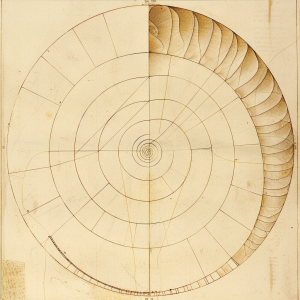Unrestricted Warfare, an arguably influential book by Chinese Air Force Colonels Qiao Liang and Wang Xiangsui published in 1999, has become a touchstone for understanding the Chinese Communist Party’s strategic doctrine. This is probably my fourth reading of this work and I find myself continually drawn back to Chapter 6: “Seeking Rules for Victory” in an attempt to understand the far-reaching concepts it proposes.
This chapter lays out a framework for achieving national aims through coordinated, multi-domain “unrestricted” operations that transcend traditional warfighting into realms like economics, cyberspace, law, and cultural subversion. Qiao and Wang advocate using any means necessary to disrupt and defeat a stronger adversary’s military superiority. Over two decades later, the core ideas presented still seem presciently applicable to the CCP’s global strategic positioning.
From speculative rules like “the dominant means trumping the dominant weapon” to emphasis on asymmetry across all dimensions, Chapter 6 provides insight into how China may be operationalizing whole-of-society efforts to offset U.S. strengths. Practical examples like the “web rascals” cyberattacks demonstrate concrete manifestations of these principles. Assuming these “unrestricted” paradigms remain valid guides for Beijing, understanding them is critical to defending against China’s multi-layered quest for “victory” through hybrid confrontations.
One of the most interesting aspect of Chapter 6 is the Golden Section and the concept of the side element. It seems there is a deeper meaning from these tenets on dominance, subversion, force integration and full-spectrum confrontation. Appreciating the philosophical underpinnings may illuminate how the CCP translates abstract strategy into tangible actions across competitive domains globally. Unrestricted Warfare’s most impactful ideas deserve continual re-examination and contextual analysis.
THE GOLDEN SECTION
In Chapter 6, the authors explore how warfare has evolved and how traditional notions of military dominance are being challenged by new forms of conflict that require innovative strategies. The golden section, or 0.618, is used in illustrating the ideal balance in strategy formulation, suggesting that the most effective strategies achieve a harmonious blend of various elements.
This principle of balance is easily related to the broader thesis of the book, which argues for a shift away from reliance solely on military power towards incorporating a range of tactics including economic, technological, and psychological strategies. The golden section symbolizes the optimal balance between these elements, aiming to achieve a proportionate and effective response in the complex landscape of modern warfare.
This approach calls for understanding and implementing strategies that are not only balanced but also adaptive, recognizing the fluid nature of modern conflicts and the need for agility in decision-making processes. The golden section thus serves as a conceptual tool to guide strategic thinking towards achieving this balance and flexibility in the pursuit of victory.
The Golden Section, also known as the Golden Ratio or the Divine Proportion, is a mathematical concept that has fascinated scholars, artists, and architects for centuries due to its unique properties and its prevalence in nature, art, and design.
The Golden Ratio is represented by the Greek letter phi (φ), which is an irrational number approximately equal to 1.618033988749895. It is derived from the ratio of a line segment divided into two parts, where the ratio of the longer part to the whole is equal to the ratio of the shorter part to the longer part.
Mathematically, if a line segment is divided into two parts, a and b, such that a is the longer part and b is the shorter part, then the Golden Ratio is represented by the equation:
a/b = (a + b)/a = φ
This ratio has several remarkable properties:
- Aesthetically pleasing proportions: The Golden Ratio is widely considered to be aesthetically pleasing and harmonious. It has been used in art, architecture, and design throughout history, as it is believed to create visually appealing and balanced compositions.
- Fibonacci sequence: The Golden Ratio is closely related to the Fibonacci sequence, where each number in the sequence is the sum of the two preceding numbers (0, 1, 1, 2, 3, 5, 8, 13, 21, …). As the Fibonacci sequence progresses, the ratio between consecutive numbers approaches the Golden Ratio.
- Nature’s patterns: The Golden Ratio is found in many natural phenomena, such as the spiral patterns in sunflowers, nautilus shells, hurricanes, and even the proportions of the human body.
- Self-similarity: The Golden Ratio exhibits self-similarity, meaning that if you divide a line segment according to the Golden Ratio, the resulting smaller segment will have the same ratio to the larger segment as the larger segment has to the whole.
The Golden Section has been studied and applied in various fields, including:
- Art and architecture: The Golden Ratio has been used in the design of buildings, paintings, sculptures, and other works of art, as it is believed to create aesthetically pleasing and harmonious compositions.
- Design: The Golden Ratio is often used in product design, graphic design, and typography, as it is thought to create visually appealing and balanced layouts.
- Biology and anatomy: The Golden Ratio has been observed in the proportions of various biological structures, such as the human body, the spiral patterns of DNA, and the arrangement of leaves on a stem.
- Music and aesthetics: The Golden Ratio has been linked to the perception of beauty and harmony in music and other artistic expressions.
While the Golden Ratio is revered for its mathematical properties and aesthetic appeal, it is important to note that its widespread use and significance in various fields is often debated and subject to ongoing research and discussion.
THE GOLDEN SECTION AND WARFARE
While the golden ratio is primarily associated with aesthetics, design, and patterns found in nature, there have been some attempts to apply it to military strategy and tactics throughout history. However, these applications are less well-documented and much more speculative compared to the ratio’s use in art, architecture, and mathematics, yet this is where we find Liang and Xiangsui writing.
Here are a few instances where the golden ratio has been linked to warfare:
- Fortifications and defensive structures: Some historians and researchers have suggested that the golden ratio may have been used in the design of certain fortifications, castles, and other defensive structures during various periods in history. The idea is that the proportions based on the golden ratio could have provided structural stability and aesthetic appeal, potentially enhancing the psychological impact on attackers.
- Military formations and tactics: There have been claims that some ancient military formations and tactical maneuvers may have been influenced by the golden ratio. For example, some scholars have speculated that the Greek phalanx formation, which was a rectangular mass military formation, may have incorporated the golden ratio in its proportions. However, these claims are largely conjectural and lack solid historical evidence.
- Weapons and siege engines: A few researchers have proposed that the golden ratio may have been used in the design of certain ancient weapons and siege engines, such as catapults and ballistae. The idea is that the proportions based on the golden ratio could have optimized the performance and efficiency of these devices. However, these claims are not widely accepted or supported by comprehensive historical records.
Most historians and military experts consider the alleged connections between the golden ratio and warfare to be largely anecdotal or coincidental, rather than deliberate applications based on a deep understanding of the mathematical principle.
HUA LUOGENG: 0.618
Liang and Xiangsui discuss the Chinese mathematician and economist Hua Luogeng at length. Luogeng developed an optimization method known as the “0.618 method” or the “golden section method” in the 1960s. This method is based on the golden ratio (yes, approximately 0.618) and its application to optimization problems.
The 0.618 method is an iterative optimization technique that aims to find the maximum or minimum value of a function within a given interval. It is particularly useful when the function is unimodal (having a single maximum or minimum) and when the derivative information is unavailable or difficult to obtain.
The basic idea behind the 0.618 method is to divide the search interval into two parts using the golden ratio. The function is evaluated at these two points, and the smaller subinterval containing the optimum is identified. This process is then repeated iteratively, reducing the search interval and converging towards the optimum solution.
I know, it hurts my head, but here’s a brief outline of the 0.618 method:
- Define the initial search interval [a, b] and a stopping criterion (e.g., a maximum number of iterations or a desired precision).
- Divide the interval into two parts using the golden ratio: x1 = a + 0.618(b – a) and x2 = a + 0.382(b – a).
- Evaluate the function at x1 and x2, and determine which subinterval contains the optimum value.
- Update the search interval by discarding the subinterval that does not contain the optimum.
- Repeat steps 2-4 until the stopping criterion is met.
Hua Luogeng’s work on the 0.618 method gained popularity in China, and the method has been widely applied in various fields, including engineering design, economic analysis, and operations research. It is often taught in Chinese universities and is considered a valuable tool in the field of optimization and decision-making.
While the 0.618 method is not as widely known or used in the West as other optimization techniques, it remains an important contribution to the field of numerical optimization, particularly in the context of derivative-free methods and the application of the golden ratio to optimization problems.
SUN BIN: Strategic Principles and Gaming
Liang and Xiangsui bring in the thinking of Sun Bin as well. Sun Bin was a famous Chinese military strategist and writer who lived during the Warring States period (476–221 BC). He was a descendant of the renowned strategist Sun Tzu and is known for his work, the Sun Bin’s Art of War, which is a significant contribution to Chinese military strategy and philosophy.
Sun Bin’s teachings and writings are often associated with the concept of Chinese gaming wisdom, which refers to the application of strategic principles derived from ancient Chinese games and their connection to broader philosophical and military concepts.
One of the key games associated with Sun Bin and Chinese gaming wisdom is the game of Weiqi, also known as Go. This ancient Chinese board game is known for its depth, complexity, and the strategic thinking required to excel at it. Sun Bin is believed to have drawn inspiration from the principles and strategies of Weiqi and incorporated them into his military teachings.

Below are some key aspects of Sun Bin’s teachings and their connection to Chinese gaming wisdom:
- Strategic positioning: Sun Bin emphasized the importance of strategic positioning and controlling key points on the board or battlefield. This concept is central to games like Weiqi, where controlling vital intersections and territories is crucial for success.
- Flexibility and adaptation: Sun Bin stressed the need for flexibility and the ability to adapt to changing circumstances. In games like Weiqi, players must constantly adjust their strategies based on their opponent’s moves and the evolving board position.
- Deception and misdirection: Sun Bin advocated the use of deception and misdirection to outsmart opponents. Games like Weiqi often involve setting traps, feinting, and creating false impressions to gain an advantage.
- Holistic thinking: Chinese gaming wisdom encourages a holistic approach to strategy, considering the entire board or battlefield rather than focusing solely on individual moves or battles. This principle is essential in games like Weiqi, where every move has far-reaching implications.
- Patience and long-term planning: Sun Bin emphasized the importance of patience and long-term planning, which are crucial in games like Weiqi, where the outcome is determined by a series of careful moves over an extended period.
- Leveraging strengths and weaknesses: Sun Bin taught the importance of identifying and leveraging one’s strengths while exploiting the weaknesses of opponents. This principle is central to many Chinese games, where players must carefully consider their resources and exploit any advantages they can find.
Sun Bin’s teachings and the concept of Chinese gaming wisdom have had a lasting impact on Chinese military strategy, decision-making, and even business practices. The principles derived from ancient games like Weiqi have been applied to various domains, emphasizing the value of strategic thinking, adaptability, and holistic approaches to problem-solving.
While Sun Bin’s work is primarily focused on military strategy, the underlying principles and wisdom derived from Chinese games have broader applications in areas where strategic thinking, planning, and decision-making are crucial.
SUN BIN AND HORSE RACING
Liang and Xiangsui further address a famous anecdote related to Sun Bin and his clever use of strategy in a horse race against his rival Pang Juan, as described in the historical text Tian Ji’s Horse Race (田忌赛马).
According to the story, Sun Bin was challenged to a horse race by Pang Juan, a skilled horseman known for his exceptional horses. Recognizing that his own horses were inferior, Sun Bin devised a clever stratagem.
He had the idea of digging a long, narrow ditch along the race course, with the ditch covered by thin layers of wood and earth, making it appear as a regular path. Sun Bin’s slower horses would run on the solid ground next to the ditch, while Pang Juan’s faster horses would be lured onto the covered ditch.
As the race began, Pang Juan’s horses initially took the lead, running along the path that appeared to be the race course. However, when they reached the covered ditch, the thin layers collapsed under their weight, causing the horses to stumble and struggle in the ditch, losing their momentum.
Meanwhile, Sun Bin’s horses, running on the solid ground, were able to overtake Pang Juan’s horses and win the race.
This anecdote exemplifies Sun Bin’s strategic thinking and his ability to outmaneuver his opponents through deception and unconventional tactics. It also highlights the importance of adaptability, anticipating an opponent’s strengths, and exploiting their weaknesses through clever strategies.
The story of Tian Ji’s Horse Race has become a well-known example of Chinese gaming wisdom and the application of strategic principles from ancient games and military philosophy to real-life situations. It demonstrates how Sun Bin’s teachings emphasized the value of careful planning, deception, and the use of unorthodox methods to gain an advantage over more powerful opponents.
While the historical accuracy of this specific anecdote is debated, it has become a part of the rich tradition of Chinese strategic thought and serves as a memorable illustration of the principles espoused by Sun Bin and other ancient Chinese strategists.
THE BATTLE OF CHANGSHAO
The Battle of Changshao was a famous military engagement that took place in 632 BC between the states of Qi and Lu during the Spring and Autumn period of ancient Chinese history.
This battle is particularly noteworthy because it is associated with the strategic wisdom and military tactics employed by Sun Bin, the renowned military strategist and descendant of Sun Tzu.

According to historical accounts, the Battle of Changshao unfolded as follows:
- Background: The state of Qi had invaded the territory of Lu, a smaller neighboring state. The Lu forces were significantly outnumbered and faced the prospect of defeat against the larger Qi army.
- Sun Bin’s Involvement: The ruler of Lu, Duke Xian, sought the counsel of Sun Bin, who was serving as a military advisor. Sun Bin devised an unconventional and deceptive strategy to overcome the numerical disadvantage.
- The Stratagem: Sun Bin instructed the Lu forces to dig a series of deep pits and trenches along the expected path of the Qi army’s advance. These pits were then carefully covered with layers of wood and earth, disguising them as flat ground.
- The Battle: As the Qi army advanced towards Lu, their forces unknowingly marched onto the covered pits and trenches. The weight of the soldiers and equipment caused the coverings to collapse, trapping and immobilizing large sections of the Qi army.
- Counterattack: With the Qi forces disorganized and trapped, the smaller Lu army seized the opportunity to launch a counterattack from their fortified positions. The trapped Qi soldiers were overwhelmed, and their army was forced to retreat in disarray.
The Battle of Changshao is celebrated as a masterful example of Sun Bin’s strategic genius and his ability to outsmart a larger and more powerful adversary through deception, preparation, and an understanding of terrain.
This battle also exemplifies the principles of Chinese gaming wisdom, which emphasize the importance of adaptability, unconventional thinking, and exploiting an opponent’s weaknesses. Sun Bin’s stratagem at Changshao demonstrated how careful planning, deception, and the use of terrain could overcome numerical disadvantages.
The Battle of Changshao has become a widely studied case in Chinese military history and strategy, serving as an illustration of the efficacy of Sun Bin’s teachings and the value of strategic thinking inspired by ancient Chinese games and philosophies.
CRUCIAL RELATIONSHIPS BETWEEN DYNAMICS AND STRATEGY
Qiao Liang and Wang Xiangsui present five crucial relationships or dynamics that must be considered in the complex realm of warfare and military strategy. These five relationships emphasize the importance of identifying and effectively managing the interplay between dominant or principal elements and their supporting or complementary counterparts.
- The dominant aim and all the aims: This relationship emphasizes the need to establish a clear and well-defined primary objective or goal (the dominant aim) while coordinating and aligning all other subsidiary aims or objectives to support and reinforce the principal aim. It underscores the importance of maintaining focus on the overarching mission while harmonizing various supporting efforts.
- The dominant weapon and all the weapons: In this context, the “dominant weapon” refers to the primary means or capability that is expected to play a decisive role in achieving victory. However, it must be complemented and supported by the effective employment of all other available weapons or capabilities, whether offensive, defensive, or supportive in nature. This relationship highlights the need for a comprehensive and integrated approach to leveraging various military assets.
- The dominant force and all the forces: This relationship emphasizes the necessity of identifying and concentrating the principal military force or formation (the dominant force) that will spearhead the main effort or attack. At the same time, it recognizes the importance of coordinating and employing all other supporting forces, such as reserve units, logistical elements, and specialized units, to enhance the effectiveness of the dominant force and contribute to the overall success of the operation.
- The dominant direction and all the directions: In military operations, identifying and focusing resources on the primary direction of attack or advancement (the dominant direction) is crucial. However, this relationship also highlights the need to consider and potentially exploit secondary or complementary directions that can support the main effort, create diversions, or capitalize on opportunities as they arise. It promotes a multidimensional approach to military maneuvers.
- The dominant sphere and all the spheres: The “dominant sphere” refers to the primary domain or theater of operations where the main military effort is concentrated, such as land, air, or sea. This relationship underscores the importance of not only focusing on the dominant sphere but also considering and integrating efforts across all other relevant spheres or domains. It promotes a comprehensive and coordinated approach to military operations, recognizing the interconnectedness of different battlespaces.

These five relationships emphasize the necessity of identifying and prioritizing dominant or principal elements while simultaneously leveraging and harmonizing all supporting or complementary elements. They highlight the importance of maintaining a balanced and integrated approach to military strategy, recognizing that success often depends on the effective coordination and synergy between various components, capabilities, and spheres of operation.
By considering these relationships, military strategists and commanders can develop more comprehensive and effective plans, allocate resources judiciously, and create synergies that amplify the impact of their operations. Ultimately, these principles aim to maximize the chances of achieving victory by leveraging the full potential of available means while maintaining a clear focus on the primary objectives and priorities.
IN THE END
Does it make any sense? In the last paragraph of the chapter, Liang and Xiangsui say this is all “fuzzy.” They go on to say, sometimes being fuzzy is the best of reaching clarity. For only fuzziness is good for being grasped in an overall manner—this is the Eastern style of thinking. Of course I have to ask myself as someone educating tomorrow’s thinkers and leaders—how are we doing at teaching this fuzziness?







